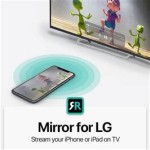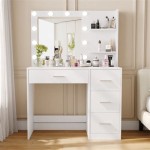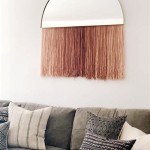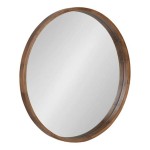Mirror Projection Screens: A Reflective Approach to Display Technology
Mirror projection screens offer a unique approach to displaying projected images by utilizing a reflective surface. Unlike traditional screens that rely on diffusion, mirror projection screens reflect light directly back towards the viewer. This characteristic presents both advantages and disadvantages, making them suitable for specific applications.
Key Features of Mirror Projection Screens:
*
High Gain:
Mirror screens boast significantly higher gain compared to matte white or grey screens. This high gain translates to brighter images, particularly beneficial in ambient light conditions. *Narrow Viewing Angle:
The reflective nature results in a narrower optimal viewing angle. Viewers positioned outside this angle may experience diminished image quality. *Specular Reflection:
The specular reflection, mirroring the projector's light, yields sharp and vibrant image reproduction. *Sensitivity to Ambient Light Placement:
Careful placement of ambient light sources is crucial to avoid direct reflections interfering with the projected image.Applications of Mirror Projection Screens:
*
Bright Environments:
Mirror projection screens excel in environments with significant ambient light, such as retail displays, conference rooms, and outdoor projections. *Short-Throw Projection:
Their high gain makes them suitable for short-throw projectors, allowing for large images in smaller spaces. *Rear Projection Setups:
Mirror projection screens can be utilized in rear projection setups, creating a sleek and space-saving display solution. *Simulations and Training:
The bright and sharp images produced by mirror screens make them suitable for simulations and training environments where visual clarity is paramount.Advantages of Mirror Projection Screens:
*
Enhanced Brightness:
The primary advantage is the increased brightness, making projections visible even in daylight or brightly lit rooms. *Vibrant Colors:
Specular reflection contributes to richer, more saturated colors, enhancing the overall visual impact. *Sharp Image Detail:
Mirror screens maintain excellent image sharpness, preserving fine details crucial for high-resolution content.Disadvantages of Mirror Projection Screens:
*
Limited Viewing Angle:
The narrow viewing angle can be a drawback, requiring viewers to be positioned within a specific range for optimal viewing. *Hotspotting Potential:
Uneven light distribution from the projector can be amplified by the reflective surface, leading to hotspots, particularly noticeable with less uniform projectors. *Ambient Light Sensitivity:
While effective in bright environments with controlled lighting, uncontrolled ambient light can cause disruptive reflections on the screen.Material and Construction of Mirror Projection Screens:
*
Front Surface Mirrors:
Some mirror projection screens utilize front surface mirrors, eliminating the double reflection that occurs with standard mirrors, further enhancing image clarity. *Specialized Coatings:
Mirror screens often feature specialized coatings to optimize reflectivity and reduce glare. *Rigid or Flexible Screens:
Mirror projection screens can be constructed as rigid panels or as flexible materials for portable applications. *Frame Design:
Frames for rigid mirror screens require robust construction to ensure stability and prevent distortions in the reflective surface.Choosing a Mirror Projection Screen:
*
Gain Consideration:
The gain rating indicates the screen's reflectivity. Higher gain is suitable for brighter environments, while lower gain may be preferred for controlled lighting situations. *Viewing Angle Requirements:
Assess the intended viewing area and choose a screen with a viewing angle that accommodates the audience. *Ambient Light Conditions:
Analyze the ambient light in the projection environment to select a screen that effectively manages existing light sources. *Projector Compatibility:
Ensure compatibility between the projector's brightness and throw ratio and the chosen mirror screen's characteristics.Installation and Maintenance of Mirror Projection Screens:
*
Precise Alignment:
Proper alignment of the projector is crucial to maximize image quality and avoid distortions. *Ambient Light Control:
Implement measures to control ambient light, such as blackout curtains or strategically placed lighting fixtures. *Surface Cleaning:
Regular cleaning is necessary to maintain the screen's reflectivity and prevent dust or smudges from impacting image quality. Use appropriate cleaning materials designed for mirrored surfaces. *Environmental Considerations:
Avoid placing the screen in direct sunlight or areas with extreme temperature fluctuations, which could damage the reflective surface or frame.Comparison with Other Projection Screen Types:
*
Matte White Screens:
While offering wider viewing angles, matte white screens have lower gain, making them less suitable for bright environments. *Grey Screens:
Grey screens offer improved black levels but also have lower gain compared to mirror screens. *Ambient Light Rejecting (ALR) Screens:
ALR screens reject ambient light from specific angles but typically do not achieve the same brightness levels as mirror screens. *Diffusion Screens:
Diffusion screens scatter light evenly, providing wide viewing angles but with reduced brightness compared to mirror screens.
Interactive Mirror Smart Touch Screen Pro Display

Mirror Foil Rear Projection Multi Touch Tv Screen

Mirror Foil Rear Projection Multi Touch Tv Screen

Glass Beaded Portable Projection Screen Size 68 H X 144 W Rear Mirror

Touch Foils With Holographic S Rear Projection Screen

Mirror Projection Screen Adwindow Front Rear S

5 Ft X 8 Mirror Projection Silver Feet

Front Projection Effect Wikipedia

Projection Screens Draper Inc

Mirror Experiment 1








